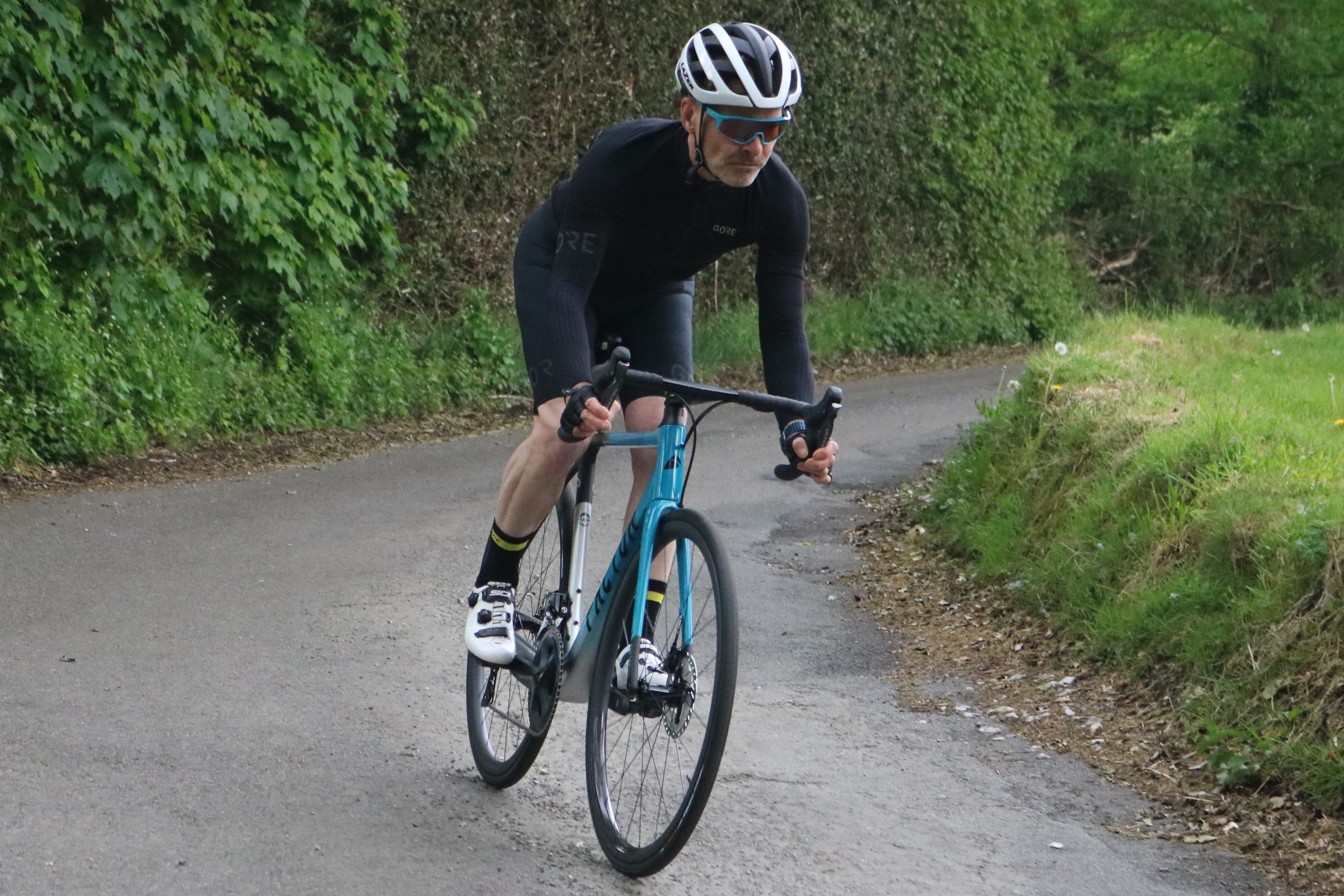Gocycle GS folding e-bike review
Gocycle’s folding e-bikes boast a clever design, but how are they to ride?

The Gocycle GS’s looks and clever design features make it a good option if you’re looking for a folding e-bike. It's low maintenance due to its enclosed drivetrain and packs into a compact package for storage and transport. But folding and unfolding processes are a bit complicated and the 16.8kg weight makes it a heavy to carry on public transport.
-
+
Packs into a compact bag
-
+
Lots of accessories
-
+
Nice ride position
-
+
Comfortable and quick
- +
-
-
A bit tricky to fold and unfold
-
-
Bar height doesn’t adjust on GS model
- -
You can trust Cycling Weekly.
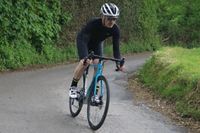
Gocycle’s rethinking of the urban e-bike features a stunning swooping magnesium alloy frame and unique single sided swing arm. It doesn’t end at the frame though: the wheels are radical too being made of alloy in a motorbike inspired five-spoke design. Combine all this with a powerful motor powered at the front wheel and the Gocycle GS is the perfect urban bike for our Editor’s Choice.
Gocycle was founded in 2002 by Richard Thorpe. He’d previously worked in the motorsports and electric vehicle industries for over 25 years and left a job as a designer at McLaren Cars to start Gocycle. His aim was to build a lightweight electric urban bike and the first Gocycle was launched in 2009 after seven years of development.
>>> Best electric folding bikes
Thorpe’s timing was excellent, as the market for easy to ride e-bikes continues to expand and more and more options are out there for the leisure rider and commuter. Brands like Brompton have now got in on the folding e-bike market too.
Gocycle’s design has the plus that it folds up into a really small package, so you can stash it away in a corner if you’re short on space. It’s also devoid of exposed messy bits, so you won’t get smeared with grease if you lug it down stairs. For £300, you can buy a wheeled docking station with a zip-up fabric cover, making for an even neater package.
On the minus side, folding and unfolding is a bit fiddly and not very intuitive. Gocycle says that you can get it down to a minute with practice, but it was taking me quite a bit longer. Along with the bike’s 16kg-plus weight, it would make taking it on the tube or a rush hour train a bit of a chore.
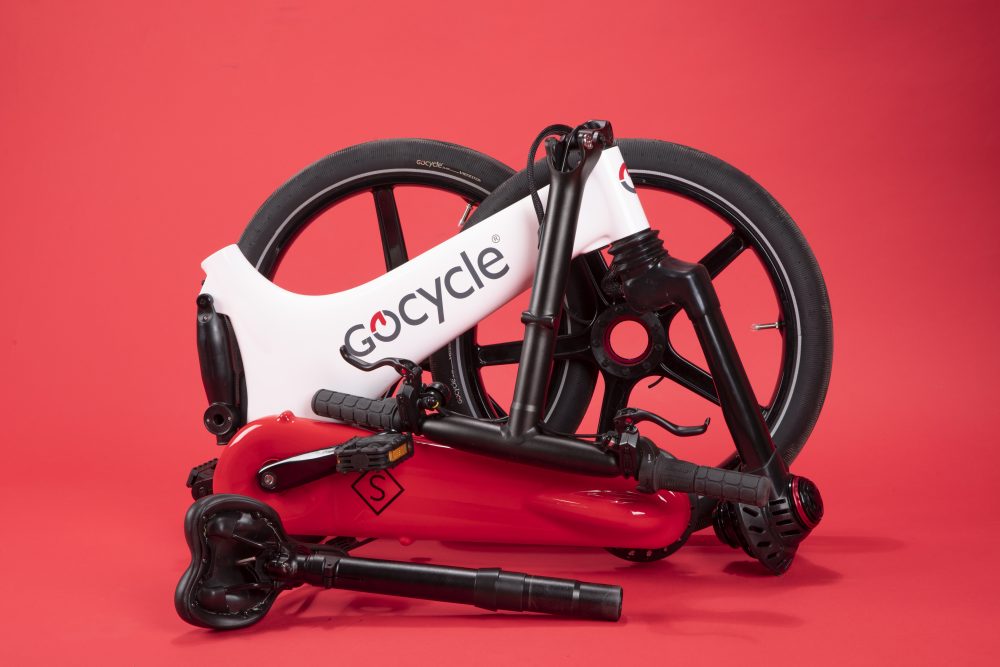
Gocycle recognises this deficiency and has addressed it with its latest Gocycle GX model. A new folding mechanism means that it’s super-easy to fold to a luggable package in under 10 seconds.
The latest race content, interviews, features, reviews and expert buying guides, direct to your inbox!
Gocycle says that its bikes are popular with sailors, who can stash them away below decks when at sea, but unpack them for mobility when ashore. Gocycle’s extensive range of accessories includes a front-mounted pannier and a rear luggage rack, as well as lights and quick-remove mudguards, so you can set the bike up for shopping or an evening trip to a restaurant.
Included with the bike is a 1.8m cable lock. If you want increased security, there’s a more robust lock available as an extra, that sits in a holster on the side of the frame when you are riding.
There’s also a bar mount for a smartphone, allowing you to use the accompanying GocycleConnect app (Android and iOS) as a dashboard when riding as well as see stats like calories burned.
>>> Best smartphone cycling apps
The bike pairs with your smartphone using Bluetooth. Once you’ve downloaded the app and paired your phone to the bike, there are a series of registration screens and pre-ride safety checks that it takes you through.
You can then set the power mode, check battery level and configure the info you’d like to see when riding. There’s a range of stats stored for each ride. But there’s no navigation or mapping, which might be nice on an e-bike likely to be packed and taken to new locations.
The range-topping G3 model comes with a set of LEDs built into the bar top to give you info like speed and battery level. It also has an integrated LED strip front running light.
Colour-wise, the GS’s main frame comes in either white or grey. But there are five different colours for the chainstay, allowing a bit of variation in your bike’s look.
Gocycle design features
Made from magnesium alloy, Gocycle’s frame has a low step-over and fully conceals the battery. Rather than a fixed rear triangle, the rear wheel is attached to the frame via its pivoting drivetrain side-only chainstay. This is held in place when riding by a shock absorber attached to the back of the frame. The shock absorber includes an elastomer allowing an inch of travel, so you’ve got extra rear end compliance. Gocycle’s saddle is nice and squishy too.
The shock comes in two parts and is held together by a plastic pin. Take out the pin and you can pivot the rear of the bike through 180 degrees for carriage and storage.
The drivetrain’s chain and cogs are completely enclosed in the chainstay structure, so it’s out of the rain and kept away from mud and grit. This makes it very low maintenance and wear-resistant. Gocycle says that it’s maintenance-free for thousands of miles.
Inside the housing are three speed Shimano Nexus mechanicals. In the Gocycle GS test, they’re controlled by a gripshift on the bars; in the higher spec Gocycle G3 gears are selected automatically as you ride.
Gocycle’s rethinking of the bike doesn’t end at the frame though: the wheels are radical too. Both are attached to the frame on the right side only. Also made of lightweight alloy, they’re five spoked, making clean-up that bit easier than a wire spoked wheel and obviating truing.

They can be completely removed for storage, by opening a sliding lock and operating three cams. The wheels then just push off the bike. They mesh with a series of knobs on the bike’s axles, to make sure that they don’t slip when riding. There are plenty of in-built safety features to make sure that they can’t drop off as you’re riding and you can bolt them to the axles if you’re worried about them being stolen.
Once you’ve taken the wheels off, you’re left with the axles, which incorporate ventilated hydraulic disc brake rotors, exposed on the left side, but their right sides and top edges enclosed in protective casings. This means that you can put the frame on the ground – as you need to when folding the bike – without damaging the brakes and it also keeps the rotors safely out of the way of pro cyclists’ fingers.
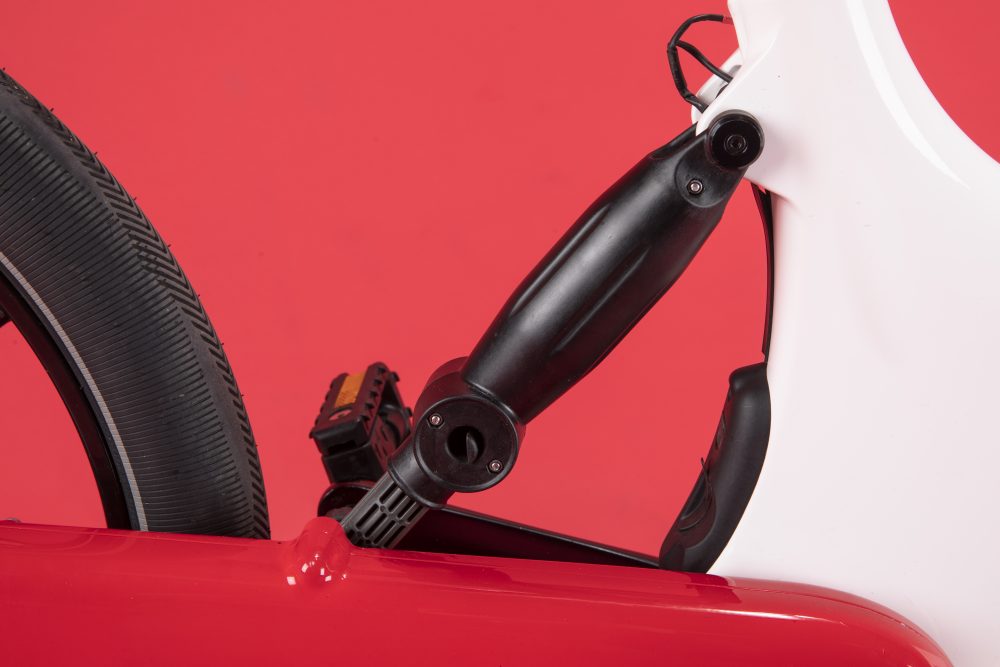
The 20 inch wheels, with their 2 inch wide tyres roll nicely over uneven surfaces and Gocycle says that you should be able to tackle less even surfaces like towpaths just fine. There’s not much tread to the tyres, but their width means that there’s a good sized contact patch with the road. If you do get a flat, the single-sided wheel attachment means that you can get the tyre off to fix it without needing to remove the wheels.
There’s a stable built-in two legged kickstand that folds away into the underside of Gocycle’s frame when you’re ready to roll. It’s helpful when you want to fold the bike too.
Gocycle geometry
At 106.5cm, Gocycle’s design leads to quite a long wheelbase for a folder. In fact, it’s comparable to a non-folding hybrid bike. Along with the bike’s low centre of gravity, this leads to a stable ride when going a bit faster, while the small wheels make the Gocycle extra manoeuvrable at low speeds.
The bar and saddle position also mirror those of a hybrid bike with full sized wheels, so the contact points and position when riding are similar. This leads to a ride that’s very familiar feeling to anyone used to riding a “normal” bike. You can tilt the bars back to a second position with a slightly closer reach too.
There’s only one frame size, but lots of adjustment in the telescopic seatpost, so you can set it for riders between 5 feet and 6 foot 5 inches tall, If you order a compact seatpost in place of the standard one, the saddle height should fit riders of 4 foot 6 inches upwards. But the bar height doesn’t adjust on the GS (although it’s adjustable on the G3), so it might be a bit high or a bit low for riders at those extremes.
You need to use an allen key to adjust seatpost length, making it slightly fiddly, although Gocycle includes a holder under the saddle for the supplied allen key, so it’s always to hand. You also need to unscrew the allen bolt to drop the seatpost and fully fold the bike so that it fits into its carrying case.
Gocycle quotes a rider and luggage weight limit of 100kg.
Gocycle motor
But of course, Gocycle’s bikes are electrically powered, not just pedalled.
The electric motor generates 250 watts and is housed in the front hub. The GocycleConnect app lets you choose between three pre-set modes: City, Eco and On-Demand as well as configure your own preferred power profile. Power delivery as you ride is determined by your applied pedal torque.
As with all e-bikes sold in the EU, assistance cuts out at 25kph. Pulling away from stops, you make a couple of pedal turns before the motor cuts in and adds extra acceleration.
The motor works a bit harder than say the Fazua unit on the Focus Paralane2 e-road bike, but no more so that with the ebikemotion unit on the Wilier Cento1Hy. It will pull you up hills without you needing to put too much extra effort in, so rides aren’t confined to flatter locations.
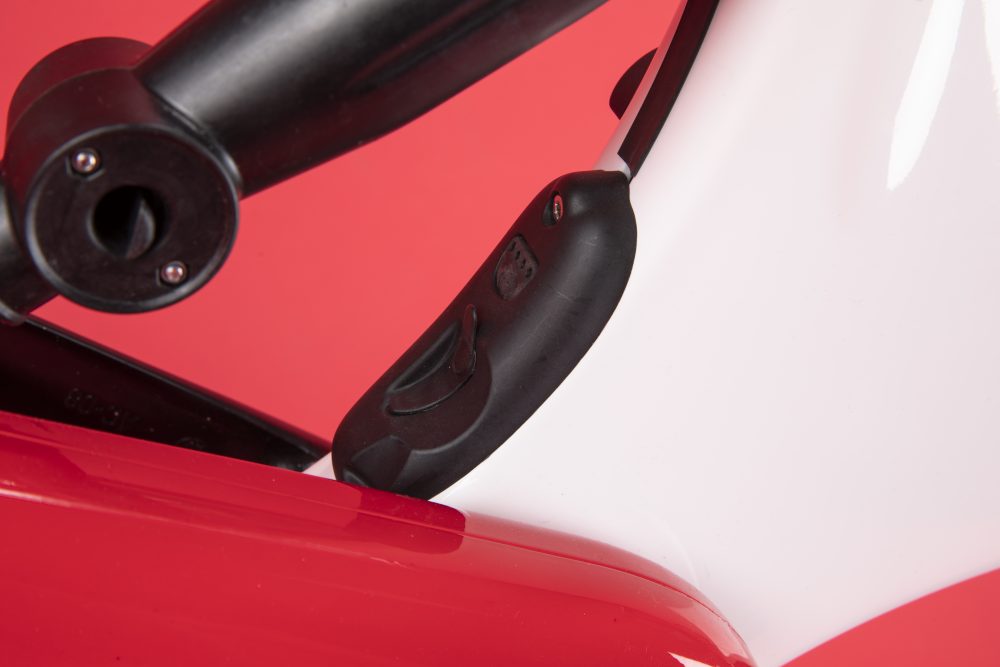
The lithium ion battery, housed in the frame, supplies 300Wh of power at 22 volts. It will give you a range of up to 65km on the Gocycle’s Eco mode, which is likely to be plenty for Gocyle’s target market. Charge time is around 7 hours, although Gocycle sells a fast charger that halves this; it’s included in the package for the higher-spec G3 model.
The charging port and on-off button are on the rear of the main frame and there’s a series of four small LEDs to show drive status. Even without mudguards, the rear shock shields it from road debris.
There is a chunky cable that runs from the bars into the frame, then out to the fork crown. It’s wrapped in a webbing sheath, so well protected, although it might end up looking a bit dirty riding on damp roads or towpaths. On the Gocycle G3, the cable runs are fully enclosed within the frame.
The 16.8kg weight, including lights, makes the Gocycle GS luggable rather than portable. It’s best carried via the seatpost and bars.Naturally it's not as light as the best folding bikes, but for an e-bike, its weight is actually pretty good. The lightest e-road bikes we’ve tested come in at around 12kg and we’ve tested non-folding hybrid e-bikes at around 17kg, so it’s not out of range.
Gobike’s closest competitor, the Brompton Electric, weighs almost exactly the same, although that bike’s removable battery pack means that you can lug it in two parts. But Gocycle’s weight is low down and its centre of gravity almost dead centre, whereas the Brompton Electric’s battery pack adds over 3kg over the front wheel.
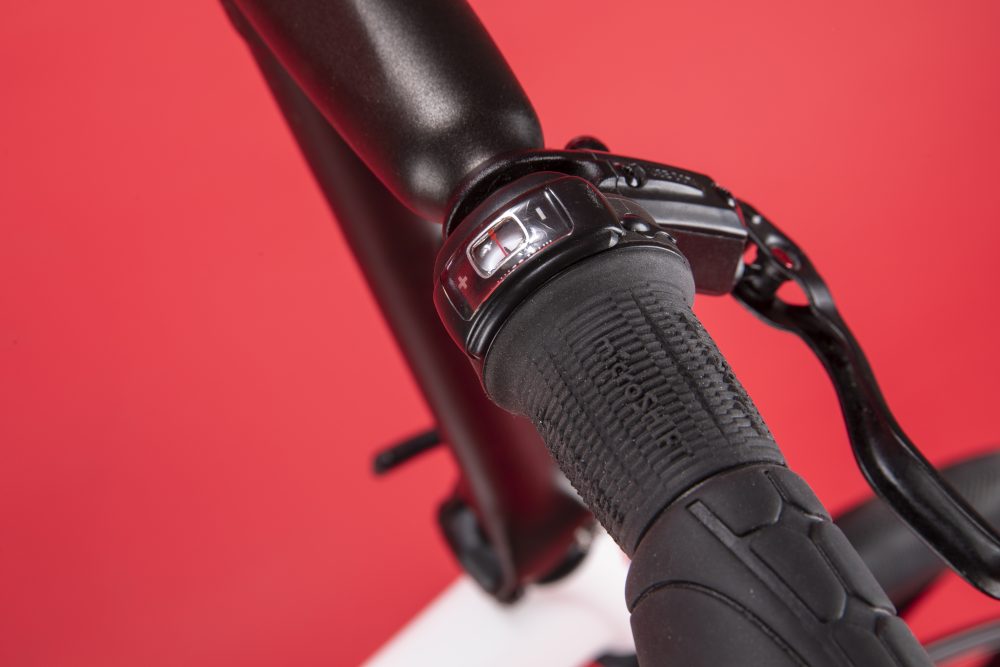
The Gocycle GS costs £2499. Again, that’s in line with the £2595 Brompton Electric. Step up to the G3 and you’re looking at £3499. The launch price for the new, more foldable GX will be £2899.
To sum up
So in summary, if you’re looking for an e-bike for leisure or commutes and your space is limited, the Gocycle GS is a neat option, with head-turning looks and clever design features It rides well, is highly manoeuvrable and the electric assist makes riding that much easier.
For an all self-propelled commute, it will get you there in style, although if you want to mix in public transport, its weight and fiddly folding mechanism make it a bit awkward.
Paul started writing for Cycling Weekly in 2015, covering cycling tech, new bikes and product testing. Since then, he’s reviewed hundreds of bikes and thousands of other pieces of cycling equipment for the magazine and the Cycling Weekly website.
He’s been cycling for a lot longer than that though and his travels by bike have taken him all around Europe and to California. He’s been riding gravel since before gravel bikes existed too, riding a cyclocross bike through the Chilterns and along the South Downs.
